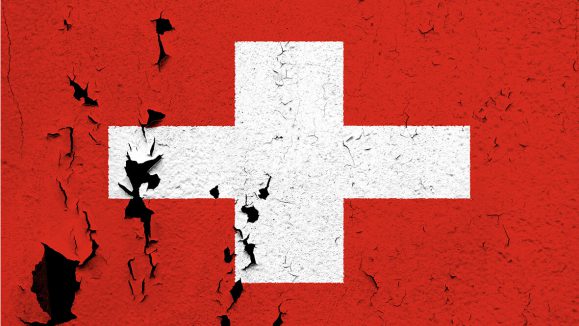From dry AMD to diabetic retinopathy and beyond, TOPCON is reimagining the future of retinal medicine with the TOPCON DRI OCT Triton multimodal imaging platform, the IRIDEX PASCAL 577 MicroPulse® subthreshold laser and the Espansione eye-light® LM® LLLT photobiomodulation.
It’s the end of 2024, and TOPCON thinks it might be time to inject new life into how we treat and manage some of the world’s most devastating retinal diseases.
Traditional tools and therapies like optical coherence tomography (OCT) imaging and intravitreal anti-VEGF injections have become synonymous with the subspecialty—but at a TOPCON-sponsored symposium in Singapore at the 17th Congress of the Asia-Pacific Vitreo-retina Society (APVRS 2024), Prof. Ian Yeo (Singapore), Prof. Kelvin Teo (Singapore) and Dr. Giulia Coco (Italy) challenged attendees to look beyond the familiar and into the future.

Rethinking subthreshold laser in the age of anti-VEGF
Although subthreshold lasers are not new, Prof. Ian Yeo thinks they have evolved into a major part of the retinal treatment landscape, especially with devices like the IRIDEX PASCAL 577.
“You all come from the generation that only knows about anti-VEGF,” Prof. Yeo said, addressing the audience. “But before anti-VEGF, the laser was the most important tool for managing patients with ischemic retinopathies—and while the PASCAL 577 can do everything a traditional laser can do, it can also do something different with its MicroPulse® subthreshold functionality.”

According to Prof. Yeo, anti-VEGF treatment is not without its flaws, and MicroPulse® subthreshold laser has a major role to play as both an alternative monotherapy and in conjunction with anti-VEGF treatment.
For starters, anti-VEGF does not treat the underlying causes of exudative retinal disease, according to Dr. Yeo—and there are question marks both in terms of patient compliance, treatment fatigue and recurring treatment cost burden arising from the need for continued injections.
And then there’s the growing subset of patients—including nearly half of those with DME—who don’t respond to anti-VEGF agents.1
“Anti-VEGF has helped our patients see better and faster, so we should end the talk here, right?” Prof. Yeo asked. “But the reality is, it’s not as simple as that. Anti-VEGF doesn’t work for everyone, and those of you who run clinics know that diabetic patients aren’t getting the best treatment possible because there’s always some edema left behind,” he said.
Prof. Yeo believes that subthreshold laser platforms like the PASCAL 577 MicroPulse® can help fill this gap. “What we have is a useful first-line adjunct therapy together with anti-VEGF treatment, which in my experience at least reduces the number of injections required,” he said. “It can also be used as a primary therapy in patients who are unsuitable for anti-VEGF treatment,” he added.
Dr. Yeo concluded with some useful pearls he uses in his clinic. “One thing I’ve experienced for these patients is that I need really high density [laser spots] and [to] fill up the whole posterior pole as much as possible,” he said. “This is safe and repeatable, but keep in mind to be patient. Results take longer injections—but they will ultimately have longer durability,” he advised.
The shift to multimodal devices
And while subthreshold MicroPulse® laser with PASCAL 577 is adapting—and thriving—in the new post-anti-VEGF world, Dr. Kelvin Teo thinks it is time for an even more dramatic change in the way retinal specialists approach imaging: the shift to all-in-one multimodal devices like the TOPCON DRI OCT Triton.

“We’ve got a new generation of imaging and retinal diagnosis monitoring available to us now—and we now have new technology from TOPCON that enhances this,” Prof. Teo said.
“The Triton series has been a mainstay in my practice. And what really strikes me about this particular platform is the speed.”
Of all Triton’s advantages, one stands above the rest for Prof. Teo. “You can see wider and you can see deeper, but the speed is what I’m most impressed with. Patients in the clinic don’t like to sit still, and any scan takes more than 10 seconds, so speed is essential in getting good quality imaging.”
At the core of the latest Triton is its multimodal imaging prowess, with onboard OCT, fluorescein angiography, color fundus and OCT angiography (OCT-A). The latter, in particular, has been a particular boon to Dr. Teo’s practice. “This is very useful in helping to colocalize where the disease is,” Prof. Teo said.

Where multimodal imaging with Triton also shines is in TOPCON’s postprocessing, including Smart Denoising, image enhancement tools and wider scan lengths. Denoising, in particular—stood out to Prof. Teo for its synergy with the imaging hardware’s speed.
“Denoising is particularly useful when you’re talking about higher speeds,” he said. “In cross-sectional OCT, for example, we don’t need to take average images, so you don’t have to wait for those repeated scans. This makes the platform even faster—on a single B scan, with smart denoise, you can get good, high-quality images.”
In the end, this combination of speed, image quality, multimodality—and TOPCON’s commitment to state-of-the-art post-processing—is why Prof. Teo continues to rely on Triton in his clinic.
“What is truly exciting is that TOPCON continues to develop these post-processing technologies and help us visualize multiple pathologies better–and having good visualization, qualitatively, is essential for a good retinal practice.”
Photobiomodulation in early dry AMD with eye-light®
Treatments for geographic atrophy (GA), a sight-stealing, late-stage progression of dry AMD, have proven to be one of the hottest topics in retinal medicine. But what if even non-specialists could add a tool in their armamentarium to treat the disease in its earlier form?
This is exactly what photobiomodulation (PBM) with Espansione’s eye-light® aims to do, and Dr. Giulia Coco (Italy) took the audience through the current evidence base for the treatment—and explained how clinicians around the world are already seeing results.
The evidence starts with the Lightwave I trial, where six-month functional and anatomical data have been presented that point to the short-term efficacy of the procedure. In the study, best corrected visual acuity (BCVA) improvements saw 20.3% of PBM-treated patients achieving a gain of 5 or more letters post-treatment, compared to 8.9% in the sham group (p=0.043).2
And this is all done, according to Dr. Coco, with maximum comfort for the patient—which means better compliance, and more consistent treatment effects.

“All patients were fully compliant with the treatment plan, and this is very interesting because this is not a procedure,” she said. “This is not uncomfortable for the patient and there was no dropout rate.”
After presenting a case study with images from a 63-year-old woman with AREDS Category 3 dry AMD who gained 5 letters in BCVA and a marked reduction in drusen volume after one month of treatment.
Dr. Coco concluded her talk by looking at the promising future of PBM with eye-light® LM® LLLT, including early case reports of a potential response in central serous chorioretinopathy. But for now, the results for dry AMD still coming out are promising enough.
“The preliminary result is that photobiomodulation therapy with eye-light® is safe and well-tolerated for patients with dry AMD, and functional and anatomical data we have analyzed so far have supported the efficacy of the procedure,” she said.
More positive results would be a major step forward in the fight against dry AMD and GA—and like all of the TOPCON technology on display in Singapore during APVRS 2024, another step into the future of retinal disease management.
Editor’s Note: Reporting for this story took place during the 17th Congress of the Asia-Pacific Vitreo-retina Society (APVRS 2024) from 22-24 November in Singapore.
References
- Okada M, Mitchell P, Finger RP, et al. Nonadherence or Nonpersistence to Intravitreal Injection Therapy for Neovascular Age-Related Macular Degeneration: A Mixed-Methods Systematic Review. Ophthalmology. 2021;128(2):234-247.
- Borrelli E, Coco G, Pellegrini M, et al. Safety, Tolerability, and Short-Term Efficacy of Low-Level Light Therapy for Dry Age-Related Macular Degeneration. Ophthalmol Ther. 2024;13(11):2855-2868.



